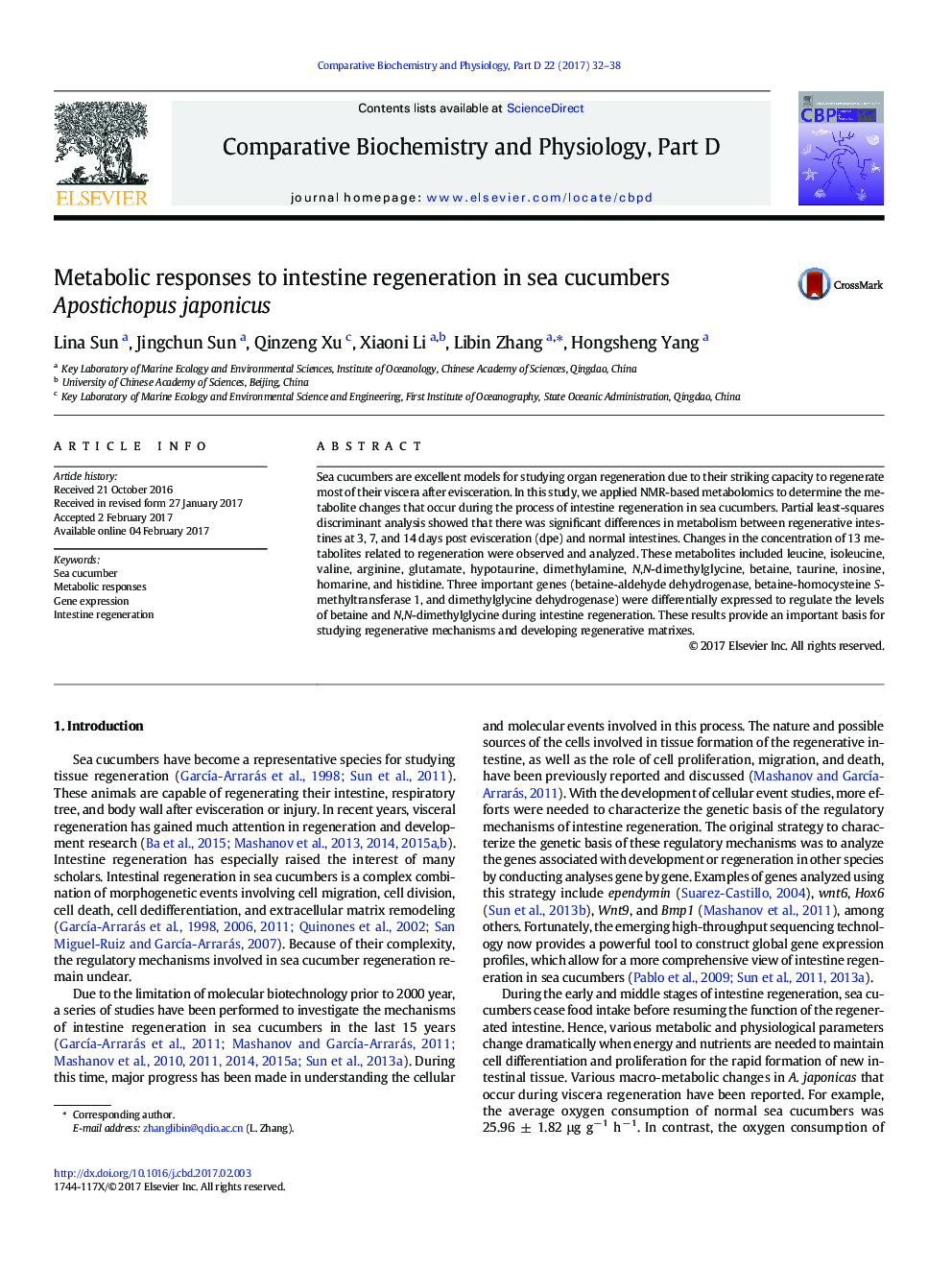| Article ID | Journal | Published Year | Pages | File Type |
|---|---|---|---|---|
| 5510729 | Comparative Biochemistry and Physiology Part D: Genomics and Proteomics | 2017 | 7 Pages |
Abstract
Sea cucumbers are excellent models for studying organ regeneration due to their striking capacity to regenerate most of their viscera after evisceration. In this study, we applied NMR-based metabolomics to determine the metabolite changes that occur during the process of intestine regeneration in sea cucumbers. Partial least-squares discriminant analysis showed that there was significant differences in metabolism between regenerative intestines at 3, 7, and 14Â days post evisceration (dpe) and normal intestines. Changes in the concentration of 13 metabolites related to regeneration were observed and analyzed. These metabolites included leucine, isoleucine, valine, arginine, glutamate, hypotaurine, dimethylamine, N,N-dimethylglycine, betaine, taurine, inosine, homarine, and histidine. Three important genes (betaine-aldehyde dehydrogenase, betaine-homocysteine S-methyltransferase 1, and dimethylglycine dehydrogenase) were differentially expressed to regulate the levels of betaine and N,N-dimethylglycine during intestine regeneration. These results provide an important basis for studying regenerative mechanisms and developing regenerative matrixes.
Related Topics
Life Sciences
Biochemistry, Genetics and Molecular Biology
Biochemistry
Authors
Lina Sun, Jingchun Sun, Qinzeng Xu, Xiaoni Li, Libin Zhang, Hongsheng Yang,
